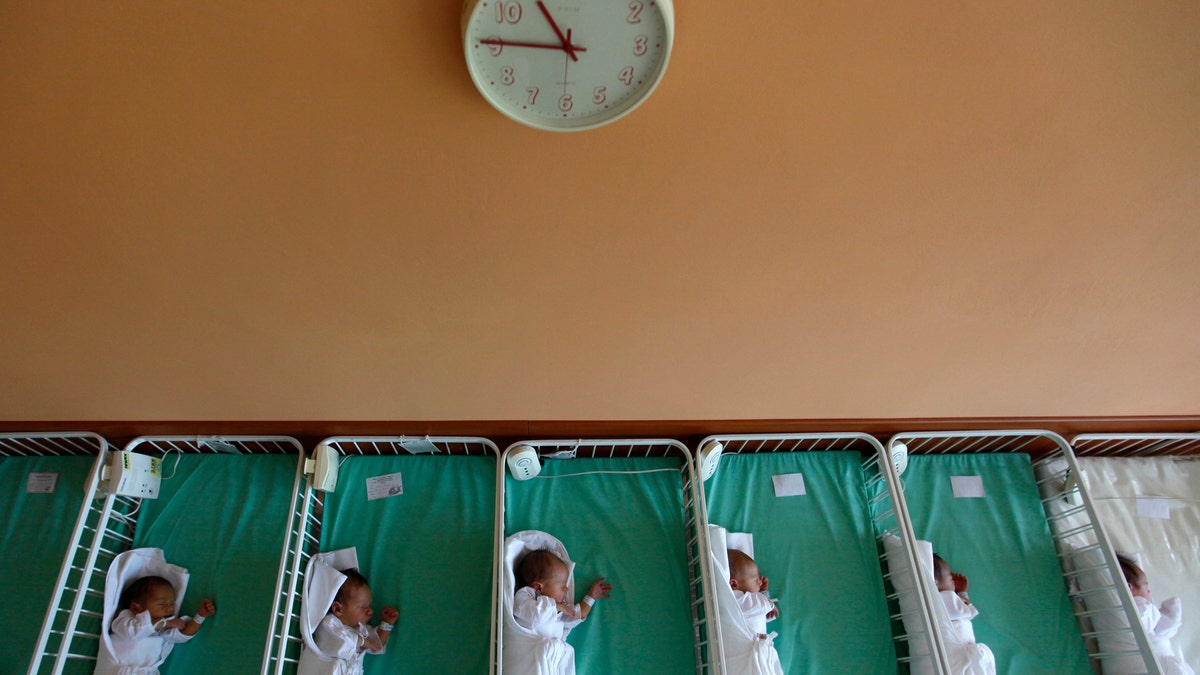
File photo - Newborn babies rest in cots in Kosice, east Slovakia May 25, 2011. (REUTERS/Petr Josek)
Even the most watchful parents can't have their eyes on their newborn at all times, but luckily, they may be getting some help from Intel. A new patent filed on Thursday for a 3D camera system for infant monitoring explains how a proposed device could use a "depth-sensing camera to detect abdomen rise and fall during an infant sleep period, or lack thereof, due to respiratory arrest." The 3D camera would be able to ascertain some surprisingly minute details, including the "distance between an infant's abdominal cavity and a camera baseline over time." Should the baby stop breathing, the device would trigger an alarm to notify parents via smartphone, laptops, tablets, or another device.
Moreover, the patent suggests that this futuristic camera would be able to detect when an infant shifts sleeping positions from sleeping on his or her back to the belly, again alerting parents if there is cause for concern. The camera, the Intel team hopes, could help to prevent sudden infant death syndrome (SIDS), which occurs most frequently during sleep and seems to be linked to respiratory issues.
"Conventional approaches to detecting an infant respiratory problem in real time require physical attachment of devices to the infant," the patent reads. "A more robust system for infant respiratory monitoring is therefore needed."
While digital cameras certainly already exist in most modern infant monitoring systems, many of these are unable to provide the level of detail that may be required in life-or-death situations. With little image analysis capacities, many of these cameras allow parents a broad overview of the goings-on with their child, but not much by way of specifics like their breathing patterns. The 3D camera, however, could be a solution.
More From Digital Trends
It's unclear as of yet exactly what form this 3D camera will take, but if it does come to fruition, it could come as a huge relief to parents everywhere.
